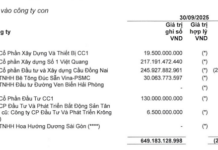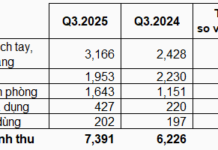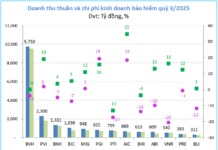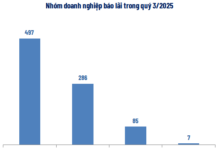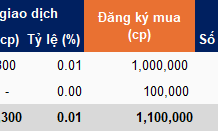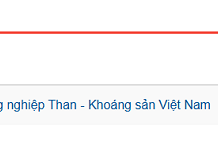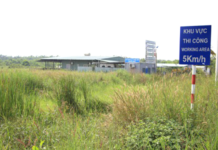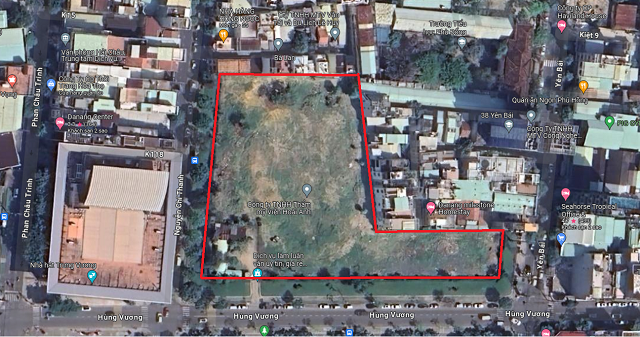The draft resolution on the control and price restraint mechanism for real estate, proposed by the Ministry of Construction, suggests allocating a minimum of 20% of commercial housing projects to the affordable price segment. This mechanism is expected to meet the urgent housing needs of buyers, but the biggest question remains: will it be attractive enough for businesses to participate?
20% Profit: Attractive with Streamlined Procedures
In a market where affordable housing has been nearly absent, the Ministry of Construction’s proposal is a commendable effort.
The draft does not yet specify eligibility criteria for buyers in these projects. However, buyers are prohibited from transferring purchase or lease contracts, as per real estate business regulations.
According to Article 4 of the draft, affordable commercial housing projects will enjoy special mechanisms: developers can be selected without bidding, land use fees are calculated based on state land price tables, and they are exempt from social housing land obligations.
In return, businesses will face price controls and must accept a maximum profit margin of 20% of the total project investment. This figure has immediately sparked debate.
From a legal perspective, Dr. Dao Van Hung, Director of the Institute of Legal Science and Business Development, believes a 20% profit is reasonable and attractive if accompanied by appropriate state support policies. Businesses focus not only on profit margins but also on capital turnover speed and investment stability.
“When the state facilitates access to preferential loans, shortens appraisal times, and simplifies administrative procedures, actual efficiency will significantly increase,” emphasized Dr. Hung.
 Beyond the 20% profit cap, streamlined legal procedures are essential to attract investors to affordable commercial housing projects. Photo: QH
|
Echoing this view, Mr. Nguyen Vu, Director of Can Nha Moi Real Estate Transaction Center, analyzed that while 20% alone seems unattractive compared to typical commercial project margins, the timeline is crucial. A project delayed 5-7 years due to legal issues erodes profits.
“Conversely, if an affordable project is prioritized with a 2-3 year lifecycle and quick capital turnover, 20% becomes acceptable. What we need is clarity and commitment from regulatory bodies,” said Mr. Vu.
Clearly, the key to making a 20% profit attractive lies in administrative reforms. Without breakthroughs in this area, the policy risks remaining on paper, as no business will trade profit for legal uncertainty.
Lingering Concerns
Despite some optimism, the policy faces skepticism from experts. Many worry it creates a hybrid model between commercial and social housing, potentially causing unforeseen market distortions.
Dr. Nguyen Hoang, a real estate expert, remains cautious. He questions the vagueness of “affordable pricing” and fears it could repeat the shortcomings of the previous 20% land allocation for social housing, where many businesses opted to pay penalties instead.
“Mandating businesses interferes with their operations. Instead of imposing, the state should allocate dedicated land and planning for this housing type,” Dr. Hoang suggested.
This concern is valid. Once implemented, the policy could create unfair competition. A state-supported affordable project would undercut a nearby commercial project with similar quality, potentially distorting market mechanisms.
 |
Additionally, policy exploitation is a real risk. While the draft prohibits contract transfers, it cannot prevent resale after ownership certification.
“We hope for affordable housing, but what’s ‘affordable’? 30 or 40 million VND/m²? How can we ensure genuine buyers like us get these homes, not speculators who resell at sky-high prices?” questioned Ms. Thuy Hanh, an office worker in Ho Chi Minh City.
Like social housing, affordable housing has strict criteria but still faces exploitation. Without rigorous filters, these units could become speculative opportunities, undermining the policy’s goals.
Experts agree that to create genuine supply, the policy must address root issues: transparent planning, streamlined procedures, and effective oversight to ensure benefits reach the intended recipients. Otherwise, the dream of affordable housing for millions will remain elusive.
|
VARS IRE: Affordable Housing, a Right Direction but Proceed with Caution The Vietnam Real Estate Market Research Institute (VARS IRE) believes the affordable commercial housing policy is a step in the right direction, crucial for adjusting prices to more reasonable levels. It directly addresses the core issue of supply-demand imbalance. The near disappearance of affordable units in Hanoi and Ho Chi Minh City has driven prices upward. VARS IRE cautions that to succeed, the policy must provide clear implementation pathways for businesses. Borrowing from social housing regulations requires careful consideration, given their existing challenges. VARS IRE warns against creating new inefficiencies that could hinder market regulation. |
QUANG HUY
– 07:00 13/10/2025
Prime Minister: Social Housing Should Not Be in Remote or Inconvenient Locations, Nor Limited to High-Rise Buildings
Prime Minister Pham Minh Chinh emphasized that social housing should not be limited to high-rise buildings but can also include low-rise structures. He stressed that these housing projects must not be located in remote, inaccessible areas or on marginal land, but rather in well-developed locations with adequate infrastructure.
Over 43,000 Private Enterprises Contribute 50% to Hai Phong’s Budget
At the entrepreneur meeting, Mr. Le Ngoc Chau, Chairman of the Hai Phong City People’s Committee, affirmed that the city is committed to consistently supporting and creating the most favorable conditions for local private enterprises to achieve sustainable growth and success, focusing on six key solution groups.
Elevate Social Housing Income Threshold for Couples to VND 40 Million/Month
The government has recently issued Decree 261, raising the income threshold for eligibility to purchase or rent social housing to 20 million VND/month for individuals, 40 million VND/month for married couples, and 30 million VND/month for single parents with children. This new regulation is expected to expand access to social housing for millions of middle-income workers in major urban areas.
Accelerating Affordable Housing Development: Businesses Gear Up for Social Housing Initiatives
Real estate businesses and associations unanimously agree that the government’s new policies on social housing development are a timely and strategic move. These measures effectively address market challenges, stimulate increased supply, and pave the way for reducing currently elevated housing prices.
Elevating the Income Ceiling for Couples Purchasing Social Housing to VND 40 Million/Month
The government has recently issued Decree 261, raising the income ceiling for eligibility to purchase or rent social housing to 20 million VND/month for individuals, 40 million VND/month for married couples, and 30 million VND/month for single parents with children. This new regulation is expected to expand access to social housing for millions of middle-income workers in major urban areas.











